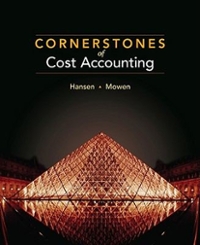Debt and Equity Capital 665 past due. After securing Barton's signature on the note and mailing it to the creditor. Hopkins entered the note in the Notes Payable account of the general ledger as $4,000, with an offset- ting debit of $4,000 to Accounts Payable. Subsequently, when funds became available to the company, he paid the $20,000 of accounts payable that remained on the books. Several months later when the note matured, a check for $24,000 plus interest was issued and properly recorded, including a debit of $24,000 to the Notes Payable account. Hopkins then altered the original credit in the account by changing the figure from $4.000 to $24,000. He also changed the original debit to Accounts Payable from $4,000 to $24,000. This altera- tion caused the Notes Payable account to have a balance in agreement with the total of other notes outstanding. To complete the fraud, Hopkins called the supplier to whom the check had been sent and explained that the check should have been for only $4,000 plus interest. Hopkins explained to the supplier that the note of $24,000 originally had been issued in settlement of a number of past-due invoices, but that while the note was outstanding, checks had been sent in payment of all the invoices. "In other words," said Hopkins over the tele- phone, "we made the mistake of giving you a note for those invoices and then going ahead and sending you checks for them as soon as our cash position had improved. Then we paid the note at maturity. So please excuse our mistakes and return the overpayment." After review- ing the record of invoices and checks received, the supplier agreed he had been overpaid by $20,000 plus interest and promptly sent a refund, which Hopkins abstracted without making any entry in the accounts. Required: a. Assuming that an audit by CPAs was made while the note was outstanding, do you think that the $20,000 understatement of the Notes Payable account would have been detected? Explain fully the reasoning underlying your answer. b. If the fraud was not discovered while the note was outstanding, do you think that an audit subsequent to the payment of the note would have disclosed the fraud? Explain. c. What controls would you recommend for Griffin Equipment Company to avoid fraud of this type







